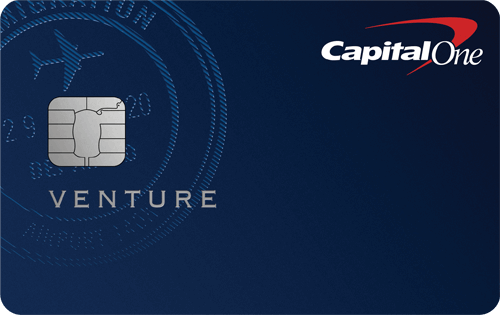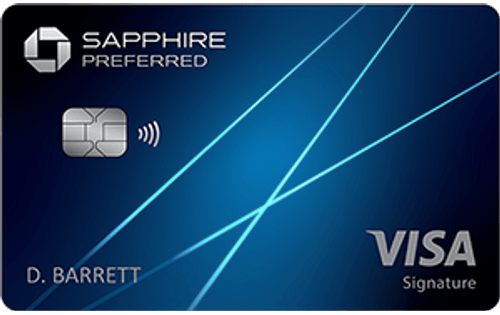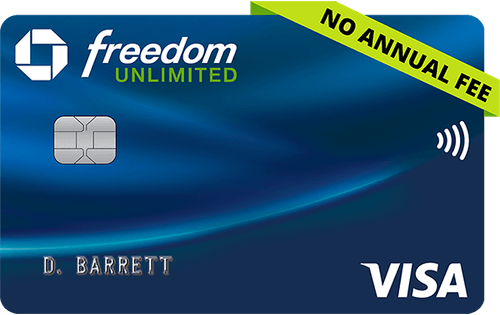Pros
- Initial Bonus: 125,000 points
- $300 Annual Travel Credit
- High rewards rate
Cons
- High Annual Fee
- High APR
Chase Sapphire Reserve®
- Earn 8x points on all purchases through Chase Travel℠, including The Edit℠ and 4x points on flights and hotels booked direct. Plus, earn 3x points on dining worldwide & 1x points on all other purchases
Earn 125,000 bonus points after you spend $6,000 on purchases in the first 3 months from account opening.
Rewards Details
- Earn 125,000 bonus points after you spend $6,000 on purchases in the first 3 months from account opening.
- Get more than $2,700 in annual value with Sapphire Reserve.
- Earn 8x points on all purchases through Chase Travel℠, including The Edit℠ and 4x points on flights and hotels booked direct. Plus, earn 3x points on dining worldwide & 1x points on all other purchases
- $300 annual travel credit as reimbursement for travel purchases charged to your card each account anniversary year.
- Access over 1,300 airport lounges worldwide with a complimentary Priority Pass™ Select membership, plus every Chase Sapphire Lounge® by The Club with two guests. Plus, up to $120 towards Global Entry, NEXUS, or TSA PreCheck® every 4 years
- Get up to $150 in statement credits every six months for a maximum of $300 annually for dining at restaurants that are part of Sapphire Reserve Exclusive Tables.
- Get complimentary Apple TV+, the exclusive streaming home of Apple Originals. Plus Apple Music — all the music you love, across all your devices. Subscriptions run through 6/22/27 — a value of $250 annually
Additional Info
- Count on Trip Cancellation/Interruption Insurance, Auto Rental Coverage, Lost Luggage Insurance, no foreign transaction fees, and more.
- Member FDIC
- More Details & Reviews About Chase Sapphire Reserve®
Is Chase Sapphire Reserve Worth It?
Chase Sapphire Reserve® is worth getting if you are a high-spending frequent traveler with excellent credit who spends a lot of time in airport lounges. With Chase Sapphire Reserve, the average person would earn over $2,000 in net rewards value over the first two years of use. That’s with the card’s annual fee factored in, too.
How Much Do You Have to Spend to Make Chase Sapphire Reserve Worth It?
If you spend at least $6,000 in the first 3 months after opening an account, Chase Sapphire Reserve will be worth it initially because that will earn you the card’s initial bonus of 125,000 points. The bonus alone will cover the $795 annual fee for at least the first year. Taking advantage of the $300 annual travel credit, complimentary access to a network of 1,300+ airport lounges and other valuable perks will also go a long way toward making the card worth owning.
Furthermore, as is the case with most rewards cards, you need to pay your bill in full every month, or else Chase Sapphire Reserve’s high APR will wind up eating away at your savings.
My Experience With Chase Sapphire Reserve
I plan to apply for Chase Sapphire Reserve before my next international trip. The big initial bonus is one of the main things drawing me to this card. I can use the cost of the trip to qualify for the initial bonus, which I can then use to pay for another trip. Or, if I apply far enough in advance, I can use the bonus to pay for my international flight. A first-class upgrade sure would be nice, if the prices make sense at the time.
Another thing that attracts me to Chase Sapphire Reserve is the airport lounge access it gets you. Yes, a lot of cards now offer airport lounge access, but few combine it with such good rewards. The ability to lounge in comfort and get my application for Global Entry paid for will definitely make my trip abroad more enjoyable.
What I Like About Chase Sapphire Reserve
-
125,000 Bonus Points
If you normally spend more than $2,000 per month and have a trip coming up in a few months, Reserve’s hefty bonus will save you a bundle. Charging at least $6,000 to the Reserve Card in the first 3 months after account opening will earn you 125,000 bonus points.
That’s more than what the average card with an initial bonus gives you, according to WalletHub’s latest Credit Card Landscape Report. A lot of points don’t always translate into a lot of dollars, but Sapphire Reserve’s sure do. 125,000 points are worth up to $1,250 when redeemed for cash, gift cards, and travel.
-
Up To 8 Points per $1 Spent on Travel
You will earn 8 points per $1 spent on purchases made through Chase Travel℠ (including The Edit℠), 4 points per $1 on direct bookings with airlines and hotels, 3 points per $1 on dining, and 1 point per $1 on all other purchases. So the more you spend in these bonus categories each month, the more likely Sapphire Reserve is for you.
-
$300 Annual Travel Credit
You will automatically receive statement credits to cover the first $300 in travel purchases that you charge to the Sapphire Reserve Card each year. Credits will post to your account the same day qualifying purchases do and will appear on your monthly statement within 1-2 billing cycles.
It’s also worth noting that you can get the most out of this feature by applying toward the end of the calendar year. Your first $300 credit applies to purchases made between the date of account opening and the end of your first December billing period. So if you get this card in October, for example, you’ll have $300 in travel to use by the end of the year (perhaps a bit sooner, depending on your billing cycle). And at that time, you’ll get a fresh $300 to use over the next 12 months. That would give you $600 in travel in just 15 months instead of 24.
-
Complimentary Airport Lounge Access
Having the Sapphire Reserve Card offer you a complimentary membership with the airport-lounge operator Priority Pass Select. Membership would ordinarily cost at least $69 per year, but how valuable this perk actually proves to be depends on how often you frequent one of Priority Pass’s more than 1,300 lounges worldwide. Plus, you get access to every Chase Sapphire Lounge® by The Club for you and two guests.
-
Rebate for Global Entry or TSA PreCheck
If you hate waiting in line for security at the airport, you’re going to like this. You can apply for TSA PreCheck at no cost, as Sapphire Reserve will refund the one-time $85 fee. Alternatively, if you’re an international traveler, Reserve will cover the $120 application fee for Global Entry or NEXUS, helping connect you to a smoother customs experience.
What I Don't Like About Chase Sapphire Reserve
-
$795 Annual Fee
Very few credit cards charge higher annual fees than Chase Sapphire Reserve. In fact, Reserve’s $795 yearly charge is about 29 times higher than the average credit card’s annual fee.
-
Potential For A Very High APR
Granted, this card was not built for financing, but a $795 annual fee still should command a better rate than the average credit card for excellent credit (17.68% APR). That’s not the case, however. Reserve offers a regular APR that could be 19.74% to 28.24% (V), depending on creditworthiness.
Other Things To Consider About Chase Sapphire Reserve
-
Ability to Transfer Rewards Points
If you have multiple Chase credit cards, you can transfer your rewards points between them at no cost. You’ll want to transfer them to your Sapphire Reserve account, not from it, though.
-
The Edit by Chase Travel℠
As a Sapphire Reserve cardholder, you’ll have access to complimentary room upgrades, meals, discounts and other amenities at Chase’s hand-picked list of lodging establishments. Just make sure you don’t have to overpay on other aspects of your visit to offset these “free” perks.
-
Excellent Credit Required
You need excellent credit to even have a chance at qualifying for the Chase Sapphire Reserve Card. If you’re unsure whether your credit measures up, check your latest score for free on WalletHub.
Chase Sapphire Reserve vs. the Competition
The Chase Sapphire Reserve Card isn’t the only plane in the sky as far as travel rewards credit cards are concerned. So we crunched the numbers on how Reserve compares to its top competitors. You can check out our findings below.
annual fee$795 | annual fee$95 | annual fee$95 | annual fee$0 |
rewards rate
| rewards rate
| rewards rate
| rewards rate
|
bonus offer Earn 125,000 bonus points after you spend $6,000 on purchases in the first 3 months from account opening. | bonus offer Enjoy a one-time bonus of 75,000 miles once you spend $4,000 on purchases within 3 months from account opening, equal to $750 in travel | bonus offer Earn 75,000 bonus points after you spend $5,000 on purchases in the first 3 months from account opening. | bonus offer Limited Time Offer: Earn a $300 Bonus after you spend $500 on purchases in your first 3 months from account opening |
Purchase Intro APRN/A | Purchase Intro APRN/A | Purchase Intro APRN/A | Purchase Intro APR0% for 15 months |
transfer intro aprN/A | transfer intro aprN/A | transfer intro aprN/A | transfer intro apr0% for 15 months Transfer Fee: Either $5 or 3% of the amount of each transfer, whichever is greater in the first 60 days (5%, min $5 after) |
Regular APR19.74% - 28.24% (V) | Regular APR19.74% - 28.74% (V) | Regular APR19.49% - 27.74% (V) | Regular APR18.49% - 27.99% (V) |
SponsoredApply Now SponsoredApply Now | SponsoredApply Now SponsoredApply Now | SponsoredApply Now SponsoredApply Now | SponsoredApply Now SponsoredApply Now |
*Earnings are based on the $28,523 in purchases that the average person can pay for with a credit card each year, according to data from the Bureau of Labor Statistics.
Chase Sapphire Reserve® Review Methodology
This Chase Sapphire Reserve® review is based on WalletHub’s proprietary 100-point credit card rating system. By using a consistent methodology to evaluate the Chase Sapphire Reserve® and all other cards, WalletHub’s credit card experts make it easy for people to compare their options and find the best credit cards for their needs.
The WalletHub rating system uses 16 key metrics grouped into seven categories: Fees, Rewards, Two-year Cost, Interest Rates, Approval Requirements, Special Features, and Reviews. Each metric has a maximum number of points allocated to it, based on the metric’s importance as determined by our editors. The points are added up to create an overall rating for the Chase Sapphire Reserve® out of a maximum of 100 points, which is then converted to a 5-point scale.
Ratings for each category reflect how close Chase Sapphire Reserve is to WalletHub’s definition of a 5-star credit card, which is based on market conditions and what we believe are reasonable terms. We compare Chase Sapphire Reserve to that standard to give a numerical approximation of how reasonable and competitive its terms are compared to other cards.
To learn more about how WalletHub rates credit card offers, check out our full credit card review methodology.






WalletHub experts are widely quoted. Contact our media team to schedule an interview.